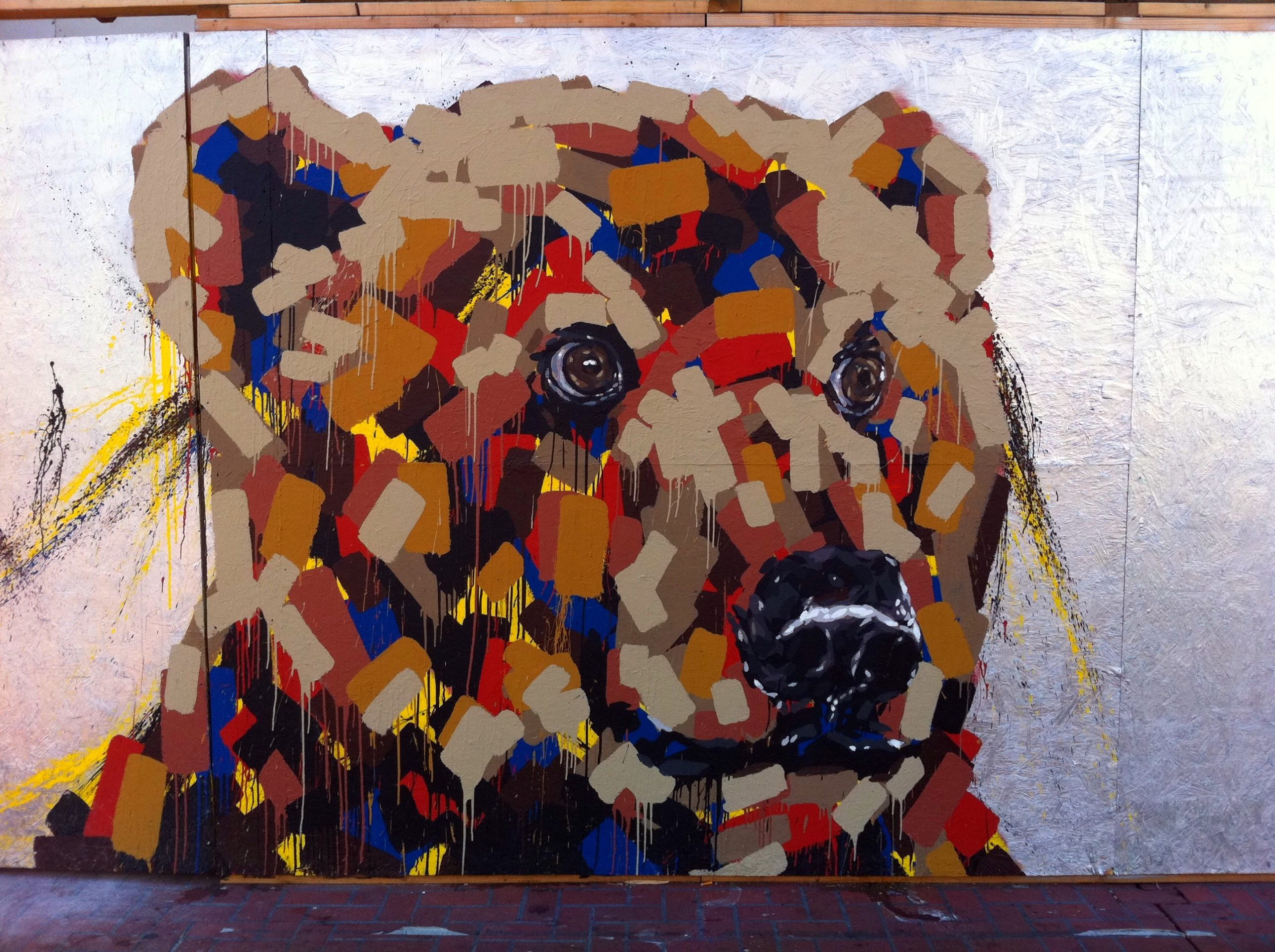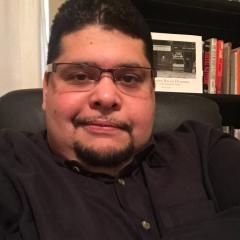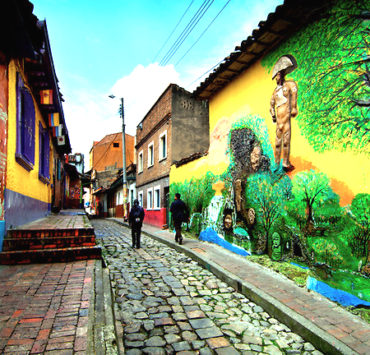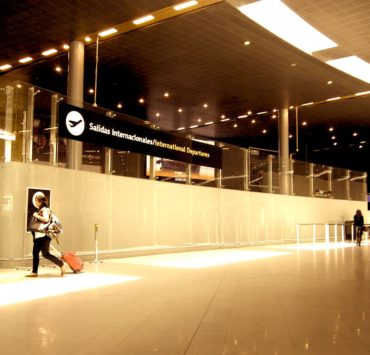
A black bear was on the run in Paterson, New Jersey. He appeared, seemingly from nowhere, along the bank of the Passaic River in Pennington Park. At some point, he jumped in and started swimming, seeking refuge finally on a small island inside the river itself, just south of the Glover Street Bridge. This is what the reporter in the helicopter said, as I watched this bear chilling on the aerial camera, lying down on the tall grass, clearly aware of others watching her, or him, but not caring enough to run, not yet. The reporter did a lot of saying from her perch in the helicopter. She said that authorities were unsure how the bear got there, “To Paterson, of all places.”
Of all places.
Tell someone you’re from Paterson, and you’ll be able to feel the twisting of the neck on the person who knows where you’re talking about. “Paterson? That’s some deep ghetto shit, son. I don’t fuck with Paterson.” Says the Bronxite. Says the Brooklynite. Says the arts patron who suddenly finds you interesting.
Today on Channel 7 Eyewitness News, on the same day of the uprising in Baltimore, there’s a bear in Paterson, my hometown and I’m immediately taken back to the tan rug, on the second floor of 915 Madison Avenue where every weekday afternoon at five, we watched a series of very matter-of-fact reporters reciting unquestioned matters of fact through the television. Before he’d get to the living room, I’d try to sit on my father’s recliner, only for him to shoo me off it with a forward flick of the hand, and I would flee like a chastened fly. I would end up sitting on our ugly tan rug, dark and flattened by foot traffic, and he would sit like a king with his narrow feet up on the Lay-Z-Boy, and we would watch the news. This was our ritual.
I have been watching the news on Channel 7 in New York since the days of Roger Grimsby and Bill Beutel, two very serious anchormen. My father has always been a voracious consumer of information: news, facts about outer space, the bochinche from the corner, the technical specifications of drill presses, the names of Cuban poets. He gifted me his thirst for information. When most of the neighborhood kids were out playing, I rifled through encyclopedias. I read the backs of LP’s—albums by old school soneros like Beny More and Vicentico Valdes—so I had a good working vocabulary of Cuban music by the age of sixteen. Most days, I am glued to the news on my laptop and as a poet I process the language in my ear, probing for what is not always obvious.
Back when I was six, I want to say it was July, because the heat in that apartment was ridiculous, my mother was restless and we were out of milk. My father was at the race track, his beloved Meadowlands. My mother and I were sitting there, sweating and sleepless. There wasn’t much to do on a random Saturday night except wait for Benny Hill reruns at 11 o’clock. We hadn’t been living there long.
“Ay, ya,” she spat suddenly. “I can’t stay inside no more. ¡Vamos, vamos, vamos!” Y nos fuimos.
We ventured outside. Madison Avenue, between 19th and 20th Avenues, right across from the Madison Avenue Baptist Church. It was eleven o’clock at night on a Saturday, in 1983, and my mother and I got dressed and left.
To most people who hear this story, who have heard stories from Paterson, this would be called a death wish. But my mom had her hair in rollers and gave no fucks. We needed milk, y ya, we’re going.
Nothing was open. So we kept walking—past Market Street, the closed storefronts and the Pentecostal church on the corner; past the dozens of multilevel homes packed with people, the illegal apartments in the attics and basements; past the Paterson Paper factory and the vast empty lot across from it; past the railroad tracks. My mother cracked a joke about being on the wrong side of those tracks. I didn’t find it funny. I don’t like unfamiliar places, as a general rule, much less when it’s dark outside. At the age of 6, I felt myself suddenly needing to be on sentry duty.
It couldn’t have helped that my brothers and my father would panic about where we lived saying how unfriendly and fucked up it was. How we were surrounded by black people. We were Puerto Rican, and Cuban, and/but—were we white? We thought we were. I know I heard the word bouncing around my head: white. I knew we didn’t mesh well with black people, and so I reasoned, this must make us white people. I remember the word bouncing around my head: black. He’s black. She’s black. That person on line is black. Is menace. Is threat. I was taught to be intimidated, on guard. And here I was, on a walk with my mother, on guard.
Here’s something else I remember: a black man, tall, walking in the opposite direction on Madison Avenue. He stopped and asked my mother what she was doing out here. We’re walking, she said. I’ll walk with you, he said. And he did. He was kind, and he was calming, at least to me. He didn’t say much of anything, except how dangerous it was to be out here. But he walked with us, past those train tracks, past those empty lots and factories, all the way to Martin Luther King Jr. Boulevard, to the one open bodega on this entire stretch. And then he left us there. We bought our milk and we went home.
My mother must have known about the danger. But she was hot, she needed to wander, and the shared connection between a woman in her rollers, in the ghetto at eleven o’clock at night, and her guardian angel. She knew restlessness and the need to buy milk. She knew she was bulletproof. I didn’t know this about her, yet.
My maternal grandfather, Julio Roman, came up from Puerto Rico to where he had family in the States, in the 1940’s: to East Harlem, around the same time as the birth of Piri Thomas, and to Amsterdam Avenue, in the same neighborhoods later made famous by Leonard Bernstein in West Side Story. The couple he stayed with later became godparents to my uncle Johnny. But ultimately, Don Julio hated it there, so he boarded a train and headed north. He settled in Amsterdam, a town that looks like a giant flung it up against a mountain. Houses are nestled between streets that in some places seem to lie straight up the face of the rocks, at impossible angles to drive, let alone walk. The family legend is, Abuelo got on the train and kept going until he saw a town that looked enough like Puerto Rico. The real story of course, was that they were hiring at General Electric, next town over in Schenectady, home of the nation’s second commercial radio station, and the place where some of the earliest television signals were broadcast.
Once Don Julio established himself in Amsterdam, my grandmother, my mother, and my aunts and uncles followed him. By 1946, he and my abuela were raising a family in a community that was tightly (if not officially) segregated among Polish, Italian, Puerto Rican and Cuban, African-American, and Anglo. Everyone stuck to their own kind. Everyone stayed in their own neighborhood. Years later, at my uncle’s funeral, the children of that generation showed up to pay their respects. By then, their babies were Polish-Italian, Puerto Rican-Cuban, Cuban-Italian, Polish-Puerto Rican, and Afro-Cuban.
When my mom turned 17, Don Julio moved the family again, this time to Passaic, New Jersey (next door to Paterson), where he met a young laborer on Monroe Street who was just off the plane from Cuba.
My father, Gustavo Villar (Gus, to most) was born in Caibarien, Cuba, in 1934. He moved to Santa Clara in 1947. On the day he left for Santa Clara, Pop’s tío Lingue was seated on the porch, in a rocking chair, and he bid Pop farewell.
From Santa Clara, Pop moved to Havana in 1955. Like many young laborers with a good trade, he quarreled with the Revolution (and his own father, who was a Communist) and he left Cuba altogether in 1962. He landed first in Miami, but through some quirk in immigration policy (which has yet to be explained to me), he had to reenter the United States from Montreal. He then landed in New Jersey by 1963. He met my grandfather, Julio Roman, that same year, through a mutual friend in my grandfather’s church. Julio’s daughter, my mother Jane, met Gus that year too, but they did not end up together until 1974, after she fled an abusive marriage and ended up in a town an hour and a half away.
I was born in that town, Edison, New Jersey, in 1977. Five years later, when they decided to look for a home together, they started looking in Clifton, a white town next door to Passaic, where my father owned a residential building and a roofing business, both of which he needed to be nearer to. Landlord after landlord—and later, bank after bank—didn’t seem to be able to help my father find anything, despite the size of the checks he was able to write by then. Eventually they found an apartment: the second floor hotbox at 915 Madison Avenue, Paterson, followed in 1986 by the house I spent the majority of my childhood in: 305 Buffalo Avenue.
Why, of all places, did we end up in Paterson, my mother asked my father one day, a few years back. “Bueno. Tratamos Clifton, pero por fin nos dejaron comprar en Paterson,” my father said. There’s a name for that in real estate circles: redlining.
The Paterson Falls are located in what is now the northwest section of the city. Alexander Hamilton chose it as the site of the first planned industrial city in the United States. The aim was to wean the new nation off its need for industrial products from Europe, and its location between New York and Philadelphia was perfect. The governor of New Jersey at the time, William Paterson, signed the charter for Hamilton’s Society for Useful Manufactures, and so the city was named after him. Silk mills, textile manufacturers, and Samuel Colt’s first gun factory, all sprang up in the city of Paterson, harnessing the power of the river and the falls for transportation, and later, electric power. The labor movement rose up in 1835, and again in 1913, to fight for shorter work days and laws against child labor. Through the mid-20th century, Paterson thrived as a center of industry and commerce, but when the labor movement fought successfully for reform, and when the economy nationwide turned increasingly to post-industrial consumption, industry fled Paterson and left the city without employment, and in many ways without an identity, a shell of its former self. When I arrived in 1983, the tales of its blight were legendary, as was white flight to the suburbs.
The Falls, now a national landmark, remain largely untouched—the last pristine piece of nature in the city. The river flows over a crack in the rocks and tumbles 77 feet into a natural raceway. On stormy days, the sheer wind forces from the water smashing the bottom of the gorge overwhelms you as you observe from the banks, or from the bridge that spans the gorge.
If you stand on one side of the park, and you scan your eyes up and down and across, you can literally see the passage of thousands of years: the process by which the river cut its course, the bends it takes on its way to the Newark Bay, the mills and the power plant that kickstarted American industry, their subsequent abandonment, the neighborhoods which sprung up around the Falls, the disrepair they have fallen into. You wonder if the green river is a natural thing, or a manmade thing, because it doesn’t smell pleasant.
I buried two siblings in Paterson. I almost lost an uncle to drugs—the same uncle who showed up on Noche Buena to play the güiro on our back porch, every year. My sister nearly died in a car accident there.
It didn’t seem like a place to raise a family. And yet, this is exactly what my parents did. In Paterson. They had no choice. I became a poet here. Of course I did.
William Carlos Williams immortalized the city in his epic poem “Paterson.” In it, he gave the world the line which became the manifesto for the imagist school of poetry: “No ideas but in things.” He wrote the introduction to Howl and Other Poems, by the Paterson poet Allen Ginsberg. When I got to Passaic County Community College, in Paterson, in 1997, my professor introduced me to Ginsberg and Williams, Blake and Yeats, Hughes, and Brooks, and Baldwin. In 2003, I met the Nuyorican Poets of East Harlem and the Lower East Side.
In 2000, my father returned to Cuba. He set foot in Caibarien for the first time since 1947. Tío Lingue, now 97 years of age, was waiting for him, in the same rocking chair, on the same porch.
I started calling myself a poet at the age of twenty-five. “Poets die young,” my father said.
I’m four. I’m riding in a car that tells the world what I am: Malibu Classic, nineteen seventy-seven, brown. I mark the land by what I can see above the rear door: the exit signs to Hackensack, Teaneck, Leonia, Fort Lee; an arch bridge spanning Route 95; the toll plaza at the George; gunmetal gray skies and a rusted metal bridge carrying me into Washington Heights. Papi knows a short cut that Mami believes is not a short cut at all. I am suddenly in Puerto Rico. My stomach knows these angles mean mountains. My eyes know these buildings are castles.
At 207th and Vermilyea in Inwood, I descend a concrete hill to the superintendent’s apartment. Tia greets me with lava in the form of cornmeal porridge. Tio shocks my hand with a joy buzzer. I believe that all magicians keep their tricks in Bustelo cans. Radio WADO is the soundtrack to black beans on plastic plates. They feed me, twice.
“Estas muy gordo,” says Tia. “¿Quieres mas?”
I am Cuban, my uncle is El Chino, my mother is Boricua, and I love my big wheel. They set me loose in the boiler room, which is where the devil lives. I look for him at the end of the corridor. He’s not there.
We have tickets to Ringling Brothers, so we take the A train downtown. The train windows are television screens, and I notice my father hyperventilating. We come topside. Everyone above ground is moving the way I imagine sound moves—deliberately, in its own direction, above and below and around other sounds. Every third building is marked with three x’s, and no one seems to know why, but I am still curious. Inside Madison Square Garden, clowns scare me more than the man who falls from the sky. There is cheering and mad people and darkness and light, and all I want to do is go home. We shuffle back to the train and watch the same movie in reverse.
The next day, my mother and I walk 207th in search of groceries for my Tia. My mother loses me in a fried fog of comida and fresh rain. I am surrounded by music: Spanish, salsa, and more feet moving down the sidewalk. I have crossed the street before my mother finds me, and she defies the red man in the walk box to scoop me up and carry me back to Tia’s. Every hair on my arm, every cell in my body, suddenly senses the danger my mother senses, the quick breaths she exhales on every long stride. Every cell in my body knows the danger makes me stronger.
The ride home is an hour of a language I don’t speak.
“Que lugar mas mala. No vuelvo mas.”
“Estan las cosas de madre.”
“Las drogas, ay Dios, como se acabaron con esa vecindad.”
“Y los hispanos, peores que todos.”
“Que dichosos somos, que vivimos en Paterson.”
I raise my eyes to highway lights traveling across my vision, pulling the Malibu along, the music of Spanish and Radio WADO crackling on the car radio, rising like dreams of islands, of metal, of castles, of return.
You’ll look at me crazy, but I don’t care: I knew those neighborhoods the second I set foot in them, before anyone told me that my family had passed through them. I knew it walking up Lexington Avenue to Taller Boricua on 105th Street. I knew it visiting my best friend in the Douglass Houses on Columbus Avenue. I knew it when I ran a poetry reading on the corner of 139th and 3rd Avenue, in the Mott Haven section of the Bronx, and I knew it when I paused to buy the most ridiculous cup of coffee on 207th and Vermilyea. I’ve traveled the same train as my grandfather, passing through Amsterdam on my way to Chicago. I know Monroe Street in Passaic like my right hand. I can drive through Paterson, and Amsterdam, and Edison, a thousand different ways.
And you’ll look at me even crazier when I tell you that I am the bear I saw on my television. A black bear, on an island in the river, literally five minutes upstream from the Paterson Falls. A black bear, native to North America, close to the most ancient of places it could still find when it wandered home—here, in the first city of industry. The helicopters circled, the spectators packed the bridge, and even the mayor of Paterson conferred with his police on the best way to handle it.
When night finally fell, the bear swam back across the river, into a cemetery, and disappeared.
Image Credits: Davity Dave

Rich Villar is a poet, essayist, activist, and educator originally from Paterson, New Jersey. His first collection of poems, Comprehending Forever (Willow Books), was a finalist for the 2015 International Latino Book Award. He has been quoted on Latino/a literature and culture by HBO and The New York Times. He is an alum of the VONA/Voices Workshop (Voices of Our Nations Arts Foundation) and the Bread Loaf Writers’ Conference. He maintains his personal blog at literatiboricua.com and is a contributor to Latino Rebels and Sofrito For Your Soul.







